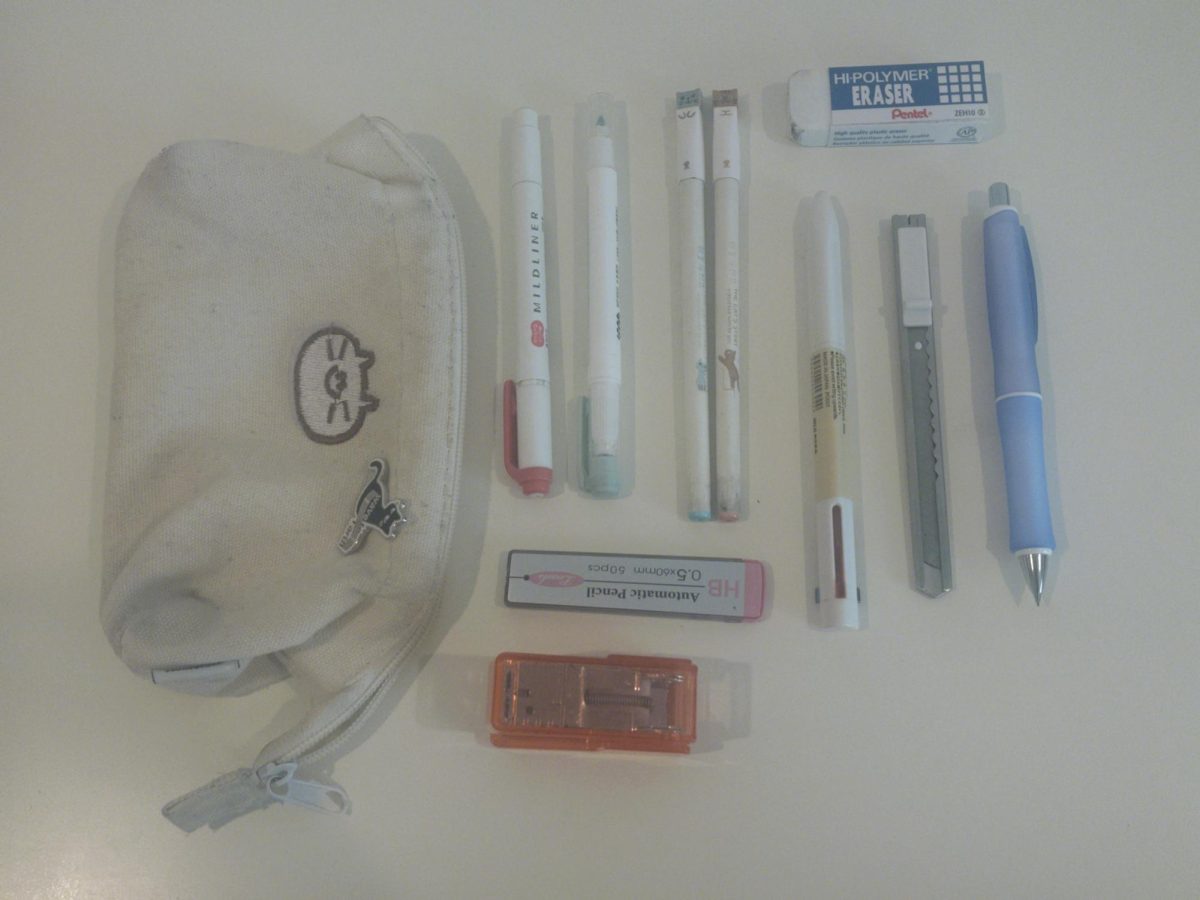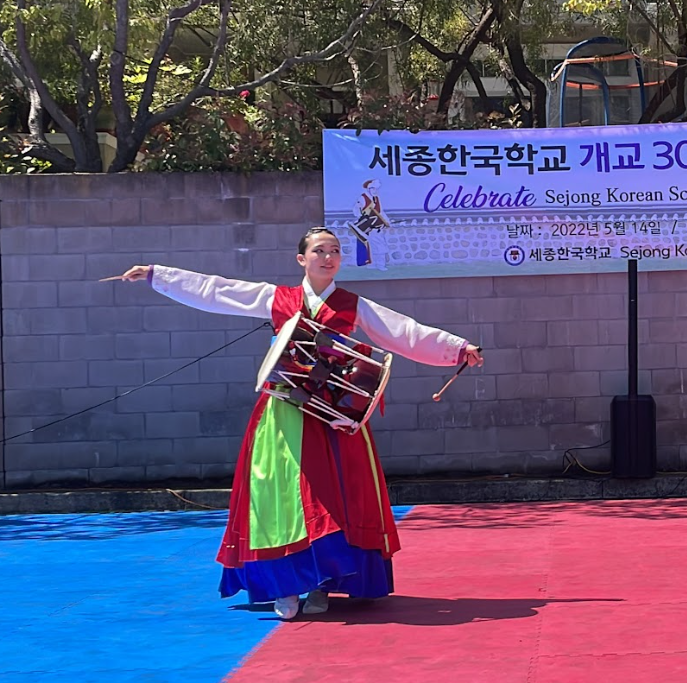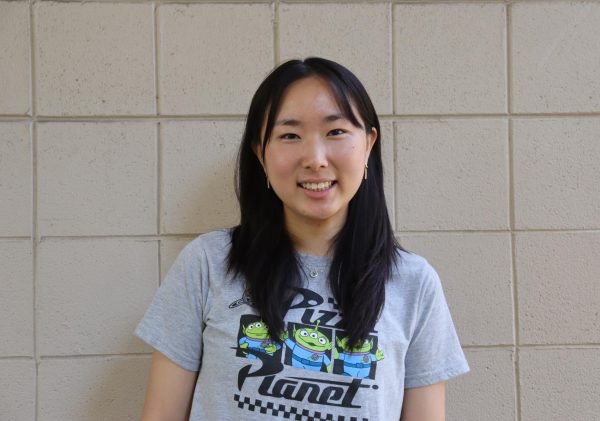The red, green and blue colored cloth of senior Hannah Shaw’s hanbok, a traditional Korean dress, cascaded into a flower-like shape as she spun to the rhythmic music at the 30th anniversary celebration of the Sejong Korean School in the early fall season of 2022. With a bright smile, she gracefully lifted her arms to bang on a Janggu, a Korean traditional drum, that hung around her neck.
For the past 10 years, Shaw has been taking weekly lessons for Korean folk dance — though she has paused taking weekly classes during senior year due to her busy schedule.
Her interest was sparked in second grade when she began attending the Silicon Valley Korean School (SVKS), which offered a variety of traditional Korean art electives such as Danso, Korean flute, traditional calligraphy and cultural folk dancing.
Much of Shaw’s decision to choose Korean folk dancing stemmed from her parents’ encouragement. Shaw’s Korean mom urged her to take a more physically active elective that connected with her heritage and gave her the freedom to express her creativity. Both her parents agreed that dance would do just that.
“It lets me be more in touch with my Korean side and explore this other side that no one really talks about as much,” Shaw said. “The dancing itself is so beautiful, graceful and elegant and I ended up loving it.”
The history of Korean traditional dancing dates back 5,000 years. It was used in religious shamanistic rituals to guide spirits into heaven. Later, when kingdoms developed, Korean dance was highly regarded by the royal court. Many of these dances became popular over 1,000 years ago, including Ghost, Fan, Monk and Entertainer folk dance.
Shaw has practiced six different Korean folk dances: Buchaechum (fan dance), Hawgamun (floral coronet dance), Janggu (drum dance), Geommu (sword dance), Kkochtaryeong (traditional flower ballad) and Ganggangsullae (harvest dance).
During her classes, Shaw alternated between each dance, but would sometimes focus on one if there was a performance coming up, which occurs around twice a month. She particularly enjoys Buchaechum, which is typically performed by groups of females and incorporates the usage of floral patterned fans to portray a blooming flower or towering mountain. The dancers wear hanboks which cover their feet — their dresses contribute to the “flowiness” of the dance.
“You can also do the dance solo-wise, but it’s much more beautiful as a group because all of the handbooks and fans portray the elegance of a flower or nature,” she said.
During her elementary school years, Shaw spent a total of one to 1.5 hours every Saturday practicing dance at the SVKS. Directly after her SVKS class, she also took an extra 3- to 5-hour dance class taught by the same teacher at Ilhyun Kim Dance Studio. Shaw left the SVKS class in fifth grade, but still continued to dance at Ilhyun Kim Dance Studio.
Despite leaving SVKS, she decided to volunteer there with her dance instructor to teach Korean folk dancing to elementary school students, which she continued until the pandemic.
“I really wanted to keep doing it because I fell in love with it,” Shaw said. “Even if I dropped out of [Korean dance] school and still have [another dance] class later in the day, I still wanted to spend time with the kids. They can be frustrating sometimes, but they’re still fun to work with and I can take a load off the teacher with [around] 20 kids.”
Due to her increasing school workload, Shaw also had to pause her dance lessons at Ilhyun Kim Dance Studio for her senior year. However, she still has her dance equipment and uses it to practice from time to time to “keep the dancing in her.”
As a member of the school’s color guard team, Shaw noted that her background in Korean dance has helped her, since she has been trained to move gracefully, use detailed facial expressions and keep a stable balance.
After her first semester of senior year, once her workload of rigorous classes combined with college apps lightens, Shaw plans to spend more time on Korean folk dancing and other activities she’s passionate about. She hopes to continue Korean dance beyond high school.
“Korean dancing helped me keep in tune with my Korean side and made me the performer I am today,” Shaw said.




























